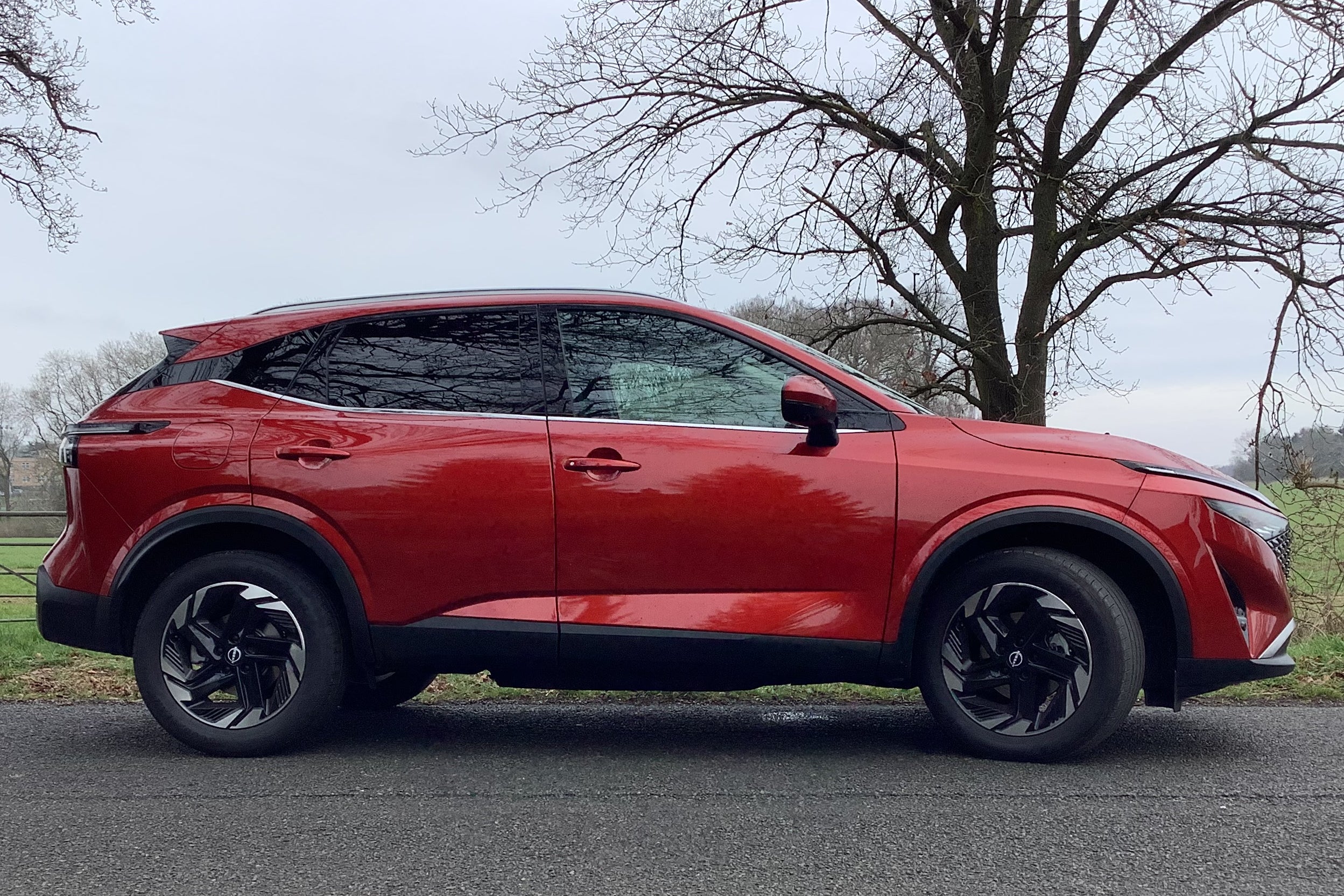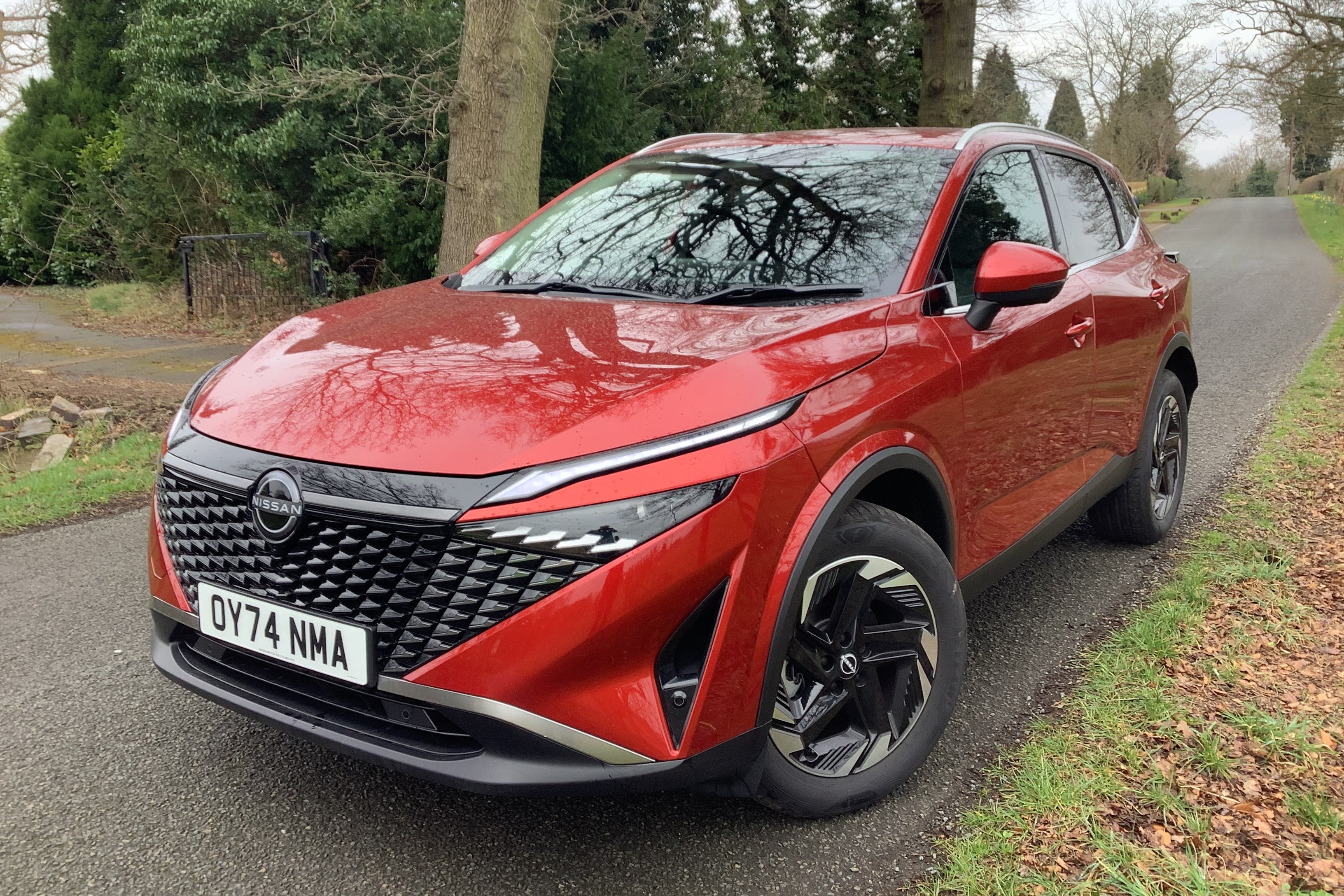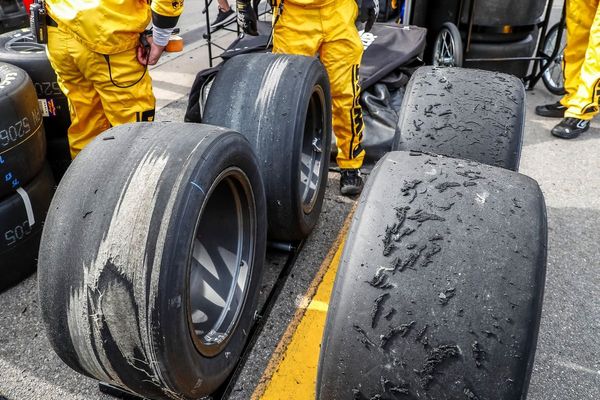
Like other long-running model nameplates before it – Range Rover, Toyota Corolla, VW Golf – the Nissan Qashqai has been constantly evolving, being honed to purpose over successive generations such that it has settled into a comfortable familiarity in the lives of millions of families. It’s had fewer faults than most, and there’s a reason why it is still trusted, sells so well and is such a common sight on the road.
It is, in fact, in danger of being rather taken for granted, albeit it still commands a substantial market share. Now cosily commonplace, once it was shockingly novel. The Qashqai did, after all, invent an entirely new market sector when the first iteration was launched back in 1997 – the “crossover”, a cross between a family hatch and an SUV, more versatile than a traditional family car and more compact and efficient than a true go-anywhere off-roader.
The neat, well-balanced styling has been revised many times since, as has everything else, but the basic concept has stood the test of time, and has attracted virtually every other manufacturer to pile in to the point where it is now a heavily overcrowded market. If imitation is the purest form of flattery, then Nissan should take some comfort and confidence in that.

We’ve previously featured in these pages the latest, rather idiosyncratic version of the Qashqai – the “e-Power” models, which use petrol to generate onboard electricity so that the car drives as smoothly as a true battery-electric vehicle, but with a more acceptable range and none of the usual pure-electric anxiety about running out of fuel. Nissan is proud of this innovation and has promoted it hard, but the majority of sales (almost 60 per cent) remain with the utterly conventional “mild hybrid” version – basically relying on the smaller petrol engine, but with a small hybrid package to aid fuel economy.
The mild hybrid Qashqai still commends itself as an excellent package. My press car was in mid-range N-Connecta trim, which fulfilled most of the reasonable expectations of its target customer.
All Qashqais come with a fairly full equipment list, with a pleasing emphasis on driver safety – even the baseline Acenta variants come with “ProPilot” adaptive cruise control (making sure you keep your distance), automatic emergency braking (in case you or others don’t), blind-spot monitoring on the door mirrors, driver attention alerts suggesting you have a nice cup of tea, traffic-sign recognition to help save you from a ticket, lane assistance (with a little tug on the steering wheel), and even an e-Call emergency response.

The Acenta is pretty good value, with a real-world list price well below £30,000 (that, I’m afraid, is the expensive state of the new car market at the moment), and if it were my money I’d probably go for that option. For a few (thousand) dollars more, the N-Connecta adds some greater conveniences – a much larger, 12.3in digital screen, plus enhanced parking kit, front parking sensors, and a very reassuring “bird’s eye” graphic chronicling your attempts to get in or out of a tight spot, as well as the standard-fitment rear parking sensors and a rear-view camera.
You have to trade up to Tekna and above to get a head-up display, powered tailgate, fully powered and massaging seats, and other sybaritic touches that turn your Nissan into a faux Bentley, but – having recently enjoyed the company of a Bentley Flying Spur – somewhat to my own surprise, I didn’t miss such features as much as I thought I would.
The Spec
Nissan Qashqai N-Connecta MHEV
Price: £33,370 (as tested; range starts at £29,820)
Engine capacity: 1.3l, 4-cyl 6-sp man + 48v elec system
Power output (hp): 156
Top speed (mph): 128
0 to 60 (seconds): 9.5
Fuel economy (mpg): 44.1
CO2 emissions (WLTP, g/km): 143
I did, though, miss having an automatic transmission; it’s strange how the manual gearbox is quietly dying out, and will be extinct by the time we complete the transition to fully electric cars. There’s nothing wrong with the Qashqai’s six-speed box as such, but the engine does need to keep its revs up to make sufficient progress. The character of the car, alongside what I imagine to be its habitual use (to transport noisy, troublesome kids), means it’s much better suited to automatic transmission – just that little bit less stressful.

Broadly, the Nissan remains class-competitive and majors on comfort and good roadholding – less so on outright performance and the very latest in automotive fashion. Although it still looks pretty smart, the interior is maybe a touch dated; the current crop of Peugeot crossovers, such as the 3008, have the edge in exterior and interior style.
I’d discount (literally) the “premium” stuff at this end of the market, because I’m not quite sure what BMW, Mercedes-Benz and Audi bring to this essentially utilitarian segment, and they’re usually overpriced (but feel free to find a bargain).
The Hyundai Tucson, Kia Sportage, and Skoda/Seat/VW counterparts are certainly worthy of consideration, and the MG ZS can’t be beaten for price. But that’s not quite the same as value, and the build quality and integrity of the Nissan should also count for something, making it a viable option even in these straitened times. (Nissan are offering this mainstream version of the Qashqai on a lease deal of £334 per month over 3 years with a £5,000 deposit – but, as ever, shop around.)
These days, as we approach a global trade war, we might also consider the virtues of buying British – the Qashqai is famously made in Sunderland, and has absolutely nothing to do with Elon Musk. One day, fairly soon, a “proper” all-electric Nissan crossover will be produced in volume at Sunderland in succession to the Qashqai. Whatever they decide to call it, it will have a lot to live up to.







